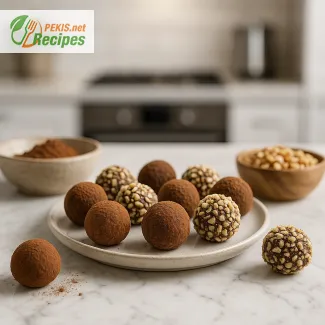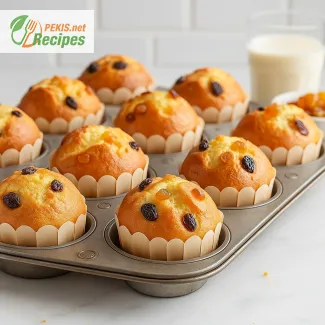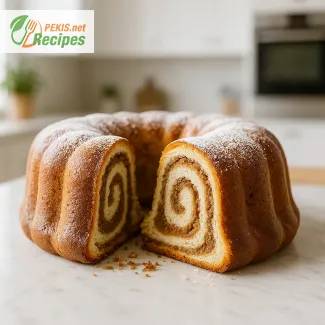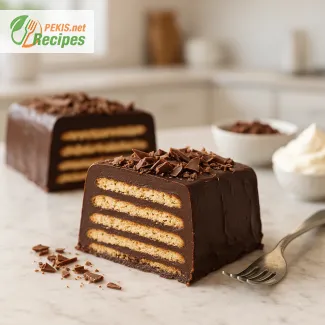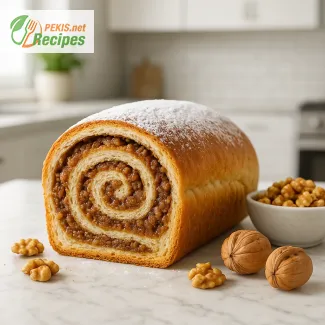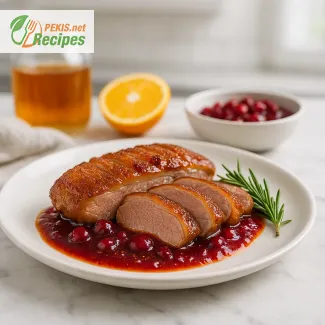
Indulge in the magic of the holiday season with Santa's Sweets, a delightful homemade lollipop recipe that brings joy to both the young and the young at heart. These vibrant, handcrafted lollipops are the epitome of festive cheer, blending artistry with flavor to create a treat that’s perfect for gifting, decorating, or savoring with your loved ones.
Nothing embodies the spirit of Christmas quite like a sweet treat crafted with care, and these lollipops are no exception. With their glassy sheen, jewel-like colors, and endless customization options, they capture the wonder of the season. Whether you're seeking to recreate childhood memories or start a new family tradition, these lollipops offer a delightful journey into the world of homemade confections.
Why Make Homemade Lollipops?
Homemade lollipops elevate simple ingredients into a stunning, flavorful creation. Unlike store-bought candies, crafting lollipops at home allows you to tailor every aspect to your taste and style. From choosing natural flavor extracts like peppermint, cherry, or vanilla to selecting vivid hues that complement your holiday theme, the possibilities are endless. Add edible glitter, crushed candy canes, or even tiny edible flowers to make each lollipop a masterpiece.
Moreover, these lollipops serve as more than just a sweet indulgence—they’re a symbol of thoughtfulness and creativity. Whether wrapped in cellophane and tied with a ribbon for gifts or displayed in a jar as edible décor, they bring an air of festive elegance to any occasion.
A Festive Treat for Every Occasion
Santa's Sweets are perfect for Christmas parties, holiday markets, or as a simple treat to brighten someone’s day. Imagine a tree adorned with handcrafted lollipops, each one shimmering under twinkling lights. The kids will love discovering these sweet surprises hanging alongside traditional ornaments, while adults will appreciate their nostalgic charm.
These lollipops are also ideal for holiday baking sessions with the family. Let your children join in the fun by choosing shapes, colors, and decorations. The process is simple yet mesmerizing: watching sugar transform from a bubbling liquid into glossy candy is a magical experience for all ages.
Crafting Perfection: The Details Matter
Achieving the perfect lollipop requires a blend of precision and patience. The key lies in the careful monitoring of temperature; sugar must reach the ideal stage to ensure the candies are hard and glossy. Using a candy thermometer is essential for success, making the process approachable even for beginners.
Presentation is another critical element of this recipe. Shaped molds, from classic circles to festive stars and snowflakes, elevate these lollipops into works of art. Combine shapes with seasonal hues—think deep reds, shimmering golds, and icy blues—to evoke the magic of Christmas.
To make them truly your own, consider adding personal touches such as initials, edible decorations, or themed wrapping. These small details turn a simple candy into a cherished holiday memory.
A Gift from the Heart
In a world filled with mass-produced treats, Santa’s Sweets stand out as a homemade treasure. Each lollipop is a testament to care, creativity, and holiday spirit. Imagine gifting a beautifully wrapped box of lollipops to friends, family, or colleagues—a heartfelt gesture that says "I made this just for you."
Whether as a thoughtful gift, a whimsical decoration, or a sweet indulgence during the festivities, Santa's Sweets bring joy, color, and flavor to the most wonderful time of the year. Dive into the world of homemade candy this holiday season and create lollipops that sparkle as brightly as the Christmas lights.
Let the sweetness of the season shine through every handcrafted lollipop, spreading warmth and cheer to all who taste them.
- Prepare Molds and Sticks:
Line a baking tray with parchment paper or grease lollipop molds lightly with oil. Place lollipop sticks in molds or directly on the tray. - Cook Sugar Mixture:
In a heavy-bottomed saucepan, combine granulated sugar, water, and corn syrup. Stir over medium heat until the sugar dissolves completely. Avoid stirring once it starts boiling to prevent crystallization. - Heat to Desired Temperature:
Attach a candy thermometer to the side of the pan and allow the mixture to boil. Heat until it reaches 150°C (302°F) — the "hard crack" stage. This ensures the lollipops will harden properly. Remove from heat immediately. - Add Color and Flavor:
Allow the bubbling to subside slightly, then add food coloring and natural flavor extract. Stir gently to combine. - Shape the Lollipops:
Pour the mixture carefully into molds or spoon it into freeform shapes onto the prepared tray. Work quickly, as the candy sets fast. Add any decorations before the lollipops harden. - Set and Cool:
Let the lollipops cool at room temperature for 20–30 minutes. Once completely hardened, remove them from molds or the tray.
Tips and Tricks to Perfect Santa's Sweets: Homemade Lollipops
Crafting homemade lollipops is as much an art as it is a science. While the recipe provides clear guidelines, there are numerous ways to elevate, modify, and adapt this recipe to suit your preferences and ensure the process is smooth. Here are detailed tips to help you perfect your lollipop-making skills and explore creative avenues with this festive treat.
1. Achieving the Perfect Texture and Shine
- Monitor Sugar Temperatures Precisely: The key to hard and glossy lollipops lies in reaching the correct temperature. Use a candy thermometer and aim for 150°C (302°F), also known as the "hard crack stage." If you go below this, the lollipops may turn sticky; above it, they can become too brittle and develop a burnt flavor.
- Avoid Stirring After Boiling: Once the sugar mixture starts boiling, stirring can cause crystallization, leading to grainy lollipops. Instead, let the mixture boil undisturbed.
- Control Humidity: Sugar is highly sensitive to moisture. Avoid making lollipops on humid days, as they may absorb moisture from the air and become sticky. Store them in an airtight container with a desiccant packet if needed.
2. Customizing Colors and Flavors
- Experiment with Colors: Use gel or liquid food coloring to match your theme. For a Christmas feel, stick to red, green, gold, or clear options. You can also swirl multiple colors together for a marbled effect by adding different colors just before pouring the mixture into molds.
- Natural Food Coloring: If you prefer natural options, beetroot powder creates vibrant reds, spirulina powder offers a rich green, and turmeric adds golden hues. These options also appeal to those avoiding artificial dyes.
- Flavor Pairing: Beyond peppermint and vanilla, consider experimenting with flavors such as orange, cinnamon, or almond. Use high-quality extracts for a robust flavor. Pairing flavors like peppermint with chocolate decorations or lemon with crushed candy canes can provide a gourmet twist.
- Layering Flavors: Add depth by layering different flavors. For example, pour a thin peppermint-flavored layer, let it set slightly, and top it with a vanilla-flavored one.
3. Creative Shapes and Designs
- Mold Selection: Invest in festive molds such as stars, snowflakes, or candy canes for a holiday touch. Silicone molds are ideal, as they allow easy removal without sticking or breaking.
- Freeform Artistry: If you don’t have molds, use parchment paper and pour the mixture into abstract or circular shapes. Add embellishments while the candy is still hot.
- Stained Glass Effect: For clear lollipops, add edible glitter or small candies like crushed candy canes for a stained-glass appearance that captures holiday lights beautifully.
4. Decorations and Add-Ons
- Crushed Candy Canes: Press crushed candy canes into the molds before pouring the sugar mixture for extra crunch and a festive look.
- Edible Glitter: A light sprinkle of edible glitter before the lollipops harden enhances their visual appeal.
- Layered Textures: Add dried edible flowers, coconut flakes, or chopped nuts (for non-allergic recipients) to provide texture and unique flavors.
- Themed Wrapping: Wrap each lollipop in clear cellophane, tied with a red or green ribbon, to create thoughtful gifts. Use personalized tags for an extra-special touch.
5. Addressing Allergens and Dietary Preferences
- Gluten-Free Option: The recipe is naturally gluten-free, but check that any decorations or added elements, such as candy canes or glitter, are certified gluten-free.
- Vegan Adaptations: To make the lollipops vegan, ensure that the food coloring and decorations don’t contain animal-derived ingredients like carmine or gelatin. Opt for plant-based alternatives where needed.
- Nut-Free Guarantee: For those with nut allergies, double-check all ingredients for possible cross-contamination, especially store-bought extracts and decorations.
- Healthier Substitutes: Replace corn syrup with rice syrup or agave syrup for a more natural touch, though this may slightly alter the texture.
6. Troubleshooting Common Issues
- Sticky Lollipops: If your lollipops remain sticky after cooling, the sugar mixture likely didn’t reach the hard crack stage. Ensure the thermometer is calibrated correctly, or increase the cooking time slightly.
- Brittle or Burnt Taste: Overheating the sugar can result in a burnt flavor and overly hard texture. Remove the pan from heat as soon as the thermometer reaches the target temperature.
- Uneven Shapes or Sizes: Pour the sugar mixture slowly and steadily into molds to avoid air bubbles or uneven distribution.
7. Storage Tips for Longevity
- Humidity Control: Store the lollipops in a cool, dry place. Avoid refrigeration, as condensation can damage their texture.
- Wrapping: Wrap each lollipop individually to prevent them from sticking together. Use food-safe plastic wraps or clear bags.
- Shelf Life: Properly stored, these lollipops can last up to 6 weeks, making them ideal for holiday preparation.
8. Elevating the Holiday Experience
- Interactive Decorating: If making these lollipops with children, let them sprinkle decorations like edible glitter or crushed candy before the lollipops harden. This interactive step can become a cherished holiday tradition.
- Themed Variations: Customize lollipops for different occasions by changing their colors and decorations. For example, pastel hues for Easter or gold and silver for New Year’s celebrations.
9. Eco-Friendly Considerations
- Reusable Sticks: Instead of disposable sticks, opt for reusable wooden or bamboo sticks. They’re sturdier, eco-friendly, and lend a rustic charm to your lollipops.
- Minimal Packaging: Wrap your lollipops in biodegradable materials or small fabric pouches for a sustainable gifting option.
10. Creative Uses for Lollipops
- Holiday Décor: Hang lollipops on your Christmas tree or use them as edible centerpieces for your holiday table.
- Gifts: Pair the lollipops with homemade hot chocolate mix or festive cookies for a thoughtful holiday gift basket.
- Place Cards: Use lollipops as personalized place cards by attaching small name tags to the sticks for holiday dinners.
Santa’s Sweets: Homemade Lollipops offer endless room for creativity and customization. From experimenting with bold colors and layered flavors to ensuring allergen-friendly options, there’s no limit to what you can achieve with this simple yet versatile recipe. These tips not only enhance the lollipop-making process but also ensure that every lollipop becomes a memorable piece of holiday joy.
- This recipe is naturally gluten-free and does not contain common allergens like nuts, dairy, or eggs.
- To avoid allergens in decorations, ensure additional ingredients like crushed candy canes are free from gluten or other allergens.
Substitution Tips:
- Replace corn syrup with rice syrup for a gluten-free alternative.
- Use organic or allergen-free flavorings to ensure no hidden additives.
While lollipops are primarily sugar-based, they contain minimal nutritional benefits. No significant vitamins or minerals are present in substantial amounts.
- Antioxidants in this recipe are minimal unless using edible flowers or natural extracts with antioxidant properties, such as mint or cherry flavoring. These may contribute minor benefits to overall health.
- Peppermint extract: Contains trace amounts of antioxidants that may support digestion and reduce inflammation.
- Edible flowers: Provide small quantities of polyphenols, which protect against free radicals.
Enjoy the sweet joy of crafting Santa's Sweets as a festive indulgence or thoughtful gift!
